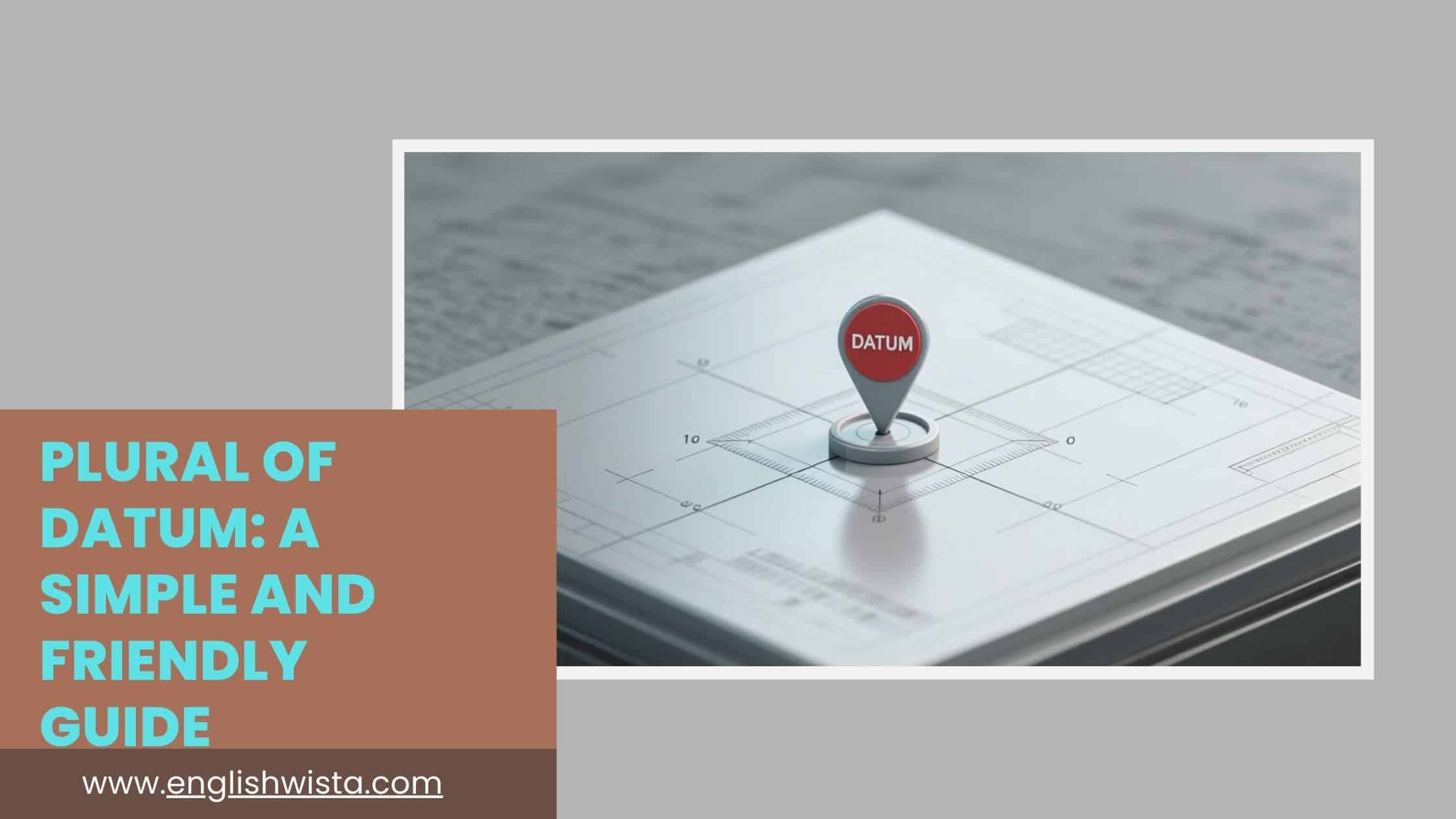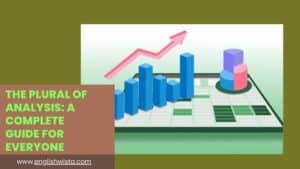Have you ever come across the word datum and paused for a second, wondering what it means or even more confusing, what its plural form is? Don’t worry, you’re not alone. Many people, including native English speakers, find this word a little tricky. It looks formal, it sounds technical, and it’s not a word we use in everyday conversation very often.
But here’s the good news: by the end of this guide, you’ll understand exactly what datum means, how to use it, and most importantly, what its plural form is. We’ll also explore some fun facts about the word, look at its history, and clear up common confusions.
So, grab a cup of coffee (or tea, if you prefer), and let’s take a closer look at this interesting word.
What Does “Datum” Mean?
Before talking about the plural, let’s get clear on the singular.
- Datum is a noun that means a single piece of information or a single fact.
- Think of it as one “data point” or one item of knowledge.
For example:
- Each datum in the survey helps researchers understand people’s opinions.
- The scientist recorded every datum carefully in the notebook.
In simple words: datum = one piece of data.
What Is the Plural of Datum?
Here’s the straightforward answer:
- The plural of datum is data.
That’s right. When you’re talking about more than one piece of information, you don’t say datums. Instead, you use the word data.
For example:
- The data show that more people prefer online shopping than in-store shopping.
- We collected several data from the experiment.
So the key takeaway is:
- Datum = singular
- Data = plural
Is “Data” Always Plural?
This is where things get interesting, and maybe a little confusing.
Traditionally, data has been the plural form of datum. In scientific or formal writing, you’ll often see it treated that way. For example:
- The data are clear.
- These data support the theory.
Notice how the verb is plural here (“are,” “support”).
But in modern English, especially in everyday conversation, many people treat data as a singular word. You’ll hear sentences like:
- The data is accurate.
- This data shows the results.
And you know what? That’s completely acceptable in today’s usage. Dictionaries and style guides often note that data can be both singular and plural, depending on context.
So here’s an easy rule for you:
- If you’re writing for science, research, or something formal, use data as plural.
- If you’re speaking casually or writing for everyday audiences, you can treat data as singular.
Is “Datums” Ever Correct?
You might be wondering: if datum is singular, can we ever just add an -s and say datums?
The short answer: yes, but only in special cases.
In general English, we don’t use datums. But in certain technical fields, like geography or cartography (map-making), the word datums is used to mean different reference points.
For example:
- The map uses two different horizontal datums.
So while it’s rare, you may see it in those specialized areas. But for everyday English, stick with datum (singular) and data (plural).
Where Does the Word Come From?
Now for a little fun history.
The word datum comes from Latin. In Latin, datum means “something given.” The plural in Latin is data, which means “things given.”
Over time, English borrowed this word, and it became connected with facts, information, and knowledge. Think of information as something that has been “given” to us that’s how the meaning makes sense.
Real-Life Examples of Datum and Data
Let’s put everything into practice with some simple sentences.
Using “datum”:
- Each datum in the experiment was carefully recorded.
- The archaeologist found a single datum that changed the whole study.
- One important datum was missing from the report.
If “data” (as plural):
- The data are still being analyzed by the research team.
- These data suggest a new trend in consumer behavior.
- The data have been published in the latest journal.
Using “data” (as singular):
- The data is easy to understand once you see the chart.
- This data shows us the company’s growth.
- All the data was stored in the computer system.
Why Does This Word Confuse People?
There are a few reasons why datum/data causes confusion:
- Rare usage of “datum.”
Most people almost never use the word datum in daily life. They just say data. - Flexible use of “data.”
Because people use data as both singular and plural, it feels inconsistent. - Other Latin words cause the same issue.
Words like medium/media or bacterium/bacteria follow similar patterns, and they confuse learners too.
The good news? Once you understand the pattern, it gets easier.
Comparing with Similar Words
Let’s look at a few other words that behave like datum/data.
- Medium → Media
Medium is singular (like one TV channel), and media is plural (like newspapers, TV, and radio together). - Bacterium → Bacteria
Bacterium is one tiny organism, while bacteria means many. - Curriculum → Curricula
Curriculum is one course of study, and curricula are several.
Just like these, datum → data follows the Latin rule.
Easy Memory Trick
Here’s a quick way to remember:
- Think of datum as “one fact.”
- Think of data as “lots of facts.”
So if you’re talking about one piece of information, use datum.
If you’re talking about many pieces of information, use data.
Fun Facts About “Datum”
Let’s sprinkle in some extra nuggets of knowledge:
- In everyday English, most people skip datum altogether and just use data for both singular and plural.
- In computing, data is almost always treated as singular. For example: Data is stored in the cloud.
- The word datum is also used in geometry and mapping, where it means a reference point.
- The Latin verb dare (to give) is the root of datum. So technically, every time you say datum, you’re saying “a thing that has been given.”
Common Mistakes to Avoid
- Don’t say datums in general English (unless you’re in a technical field).
- Don’t forget that data can be treated both ways so match your style to your audience.
- Don’t confuse data with date (a common mix-up for learners).
Quick Recap
Let’s go over the main points one more time, nice and simple:
- Datum = one piece of information.
- Data = more than one piece of information.
- In formal English, treat data as plural.
- In everyday English, it’s okay to treat data as singular.
- Datums is rare and only used in specialized fields like geography.
Conclusion
So there you have it! The mystery of datum and its plural is solved.
When you’re writing or speaking, just remember: datum is singular, data is plural. But if you’re in a casual setting, using data as singular won’t cause any problems it’s how most people talk these days.
The more you see and use these words, the more natural they’ll feel. And now, the next time someone stumbles over datum or wonders about the plural of data, you’ll have the clear and simple answer ready.
Language can be tricky, but with little guides like this, it becomes fun and a lot less scary. After all, learning new words is just collecting more data for your brain!



